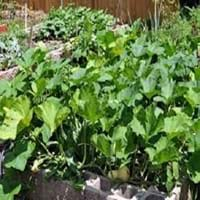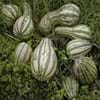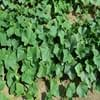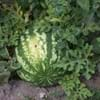Life Span
Annual
Perennial
Origin
North America, Mexico, Central America, South America
Eastern Europe
Types
Neck, Really Big Hybrid, Waltham
Not Available
Habitat
Cultivated Beds
Terrestrial
USDA Hardiness Zone
9-11
4-9
Sunset Zone
A1, A2, A3, H1, H2, 1a, 1b, 2a, 2b, 3a, 3b, 4, 5, 6, 7, 8, 9, 10, 11, 12, 13, 14, 15, 16, 17, 18, 19, 20, 21, 22, 23, 24
1a, 1b, 2a, 2b, 3a, 3b, 4, 5, 6, 7, 8, 9, 10, 11, 12, 13, 14, 15, 16, 17, 18, 19, 20, 21, 22, 23, 24
Habit
Prostrate/Trailing
Clump-Forming
Flower Color
Yellow, Gold
Yellow, Lavender, Blue Violet
Flower Color Modifier
Bicolor
Bicolor
Fruit Color
Peach, Tan
Not Available
Leaf Color in Spring
Green, Dark Green
Green, Sea Green
Leaf Color in Summer
Green, Dark Green
Green, Sea Green
Leaf Color in Fall
Green, Dark Green, Yellow green
Green, Sea Green
Leaf Color in Winter
Not Available
Light Green
Leaf Shape
Heart-shaped
Lanceolate
Plant Season
Summer, Fall
Spring, Summer
Sunlight
Full Sun
Full Sun, Partial Sun
Growth Rate
Very Fast
Medium
Type of Soil
Loam
Loam, Sand
The pH of Soil
Neutral
Neutral
Soil Drainage
Well drained
Well drained
Bloom Time
Early Summer, Summer, Indeterminate
Spring, Late Spring, Early Summer
Tolerances
Drought
Drought
Where to Plant?
Container, Ground, Pot
Ground
How to Plant?
Seedlings
By dividing rhizomes, tubers, Seedlings
Plant Maintenance
Medium
Medium
Watering Requirements
Average Water Needs
Average Water Needs, Do Not over Water
In Summer
Lots of watering
Lots of watering
In Spring
Moderate
Moderate
In Winter
Average Water
Average Water
Soil Type
Loam
Loam, Sand
Soil Drainage Capacity
Well drained
Well drained
Sun Exposure
Full Sun
Full Sun, Partial Sun
Pruning
Remove damaged leaves, Remove dead branches, Remove dead leaves, Remove dead or diseased plant parts
Remove damaged leaves, Remove dead branches, Remove dead leaves
Fertilizers
Apply 10-10-10 amount, Apply 12-12-12 amounts, Nitrogen, Phosphate, Potassium
All-Purpose Liquid Fertilizer
Pests and Diseases
Red blotch
Red blotch
Plant Tolerance
Drought
Drought
Flower Petal Number
Single
Single
Foliage Texture
Coarse
Coarse
Foliage Sheen
Matte
Matte
Attracts
Ants, Bees
Hummingbirds
Allergy
Dermatitis
Skin irritation
Aesthetic Uses
Not Used For Aesthetic Purpose
Showy Purposes
Beauty Benefits
Glowing Skin, Good for skin and hair
Not Available
Environmental Uses
Air purification
Air purification
Medicinal Uses
Antiasthamatic, anti-cancer, anti-inflammatory, Cardiovascular problems, cholesterol-lowering, constipation, Diabetes, Fiber, High blood pressure, Immunity, Manganese, Rich in Potassium, Vitamin A, Vitamin C, Vitamin E
No Medicinal Use
Part of Plant Used
Flowers, Fruits, Leaves, Seeds
Not Available
Other Uses
For making oil, Used As Food
Used as Ornamental plant
Used As Indoor Plant
Yes
No
Used As Outdoor Plant
Yes
Yes
Garden Design
Edible, Herb / Vegetable, Vine
Alpine, Edging, Mixed Border, Rock Garden, Wall
Botanical Name
CUCURBITA moschata 'Quantum'
IRIS pumila
Common Name
Butternut Squash
Dwarf Iris
In Hindi
Butternut Squash Plant
Dwarf Iris
In German
Butternut Squash-Anlage
Zwergiris
In French
Courge musquée Plante
Dwarf Iris
In Spanish
Planta de la calabaza de Butternut
Enano Iris
In Greek
Κολοκύθια Φυτών
νάνος Ίρις
In Portuguese
Butternut Squash planta
Dwarf Iris
In Polish
Piżmowa roślin
Dwarf Iris
In Latin
Planta butternut cucurbitae
Iris Dwarf
Phylum
Magnoliophyta
Magnoliophyta
Class
Magnoliopsida
Liliopsida
Family
Cucurbitaceae
Iridaceae
Clade
Angiosperms, Eudicots, Rosids
Angiosperms, Monocots
Tribe
Not Available
Irideae
Subfamily
Papilionoideae
Iridoideae
Number of Species
Not Available
Season and Care of Butternut Squash and Dwarf Iris
Season and care of Butternut Squash and Dwarf Iris is important to know. While considering everything about Butternut Squash and Dwarf Iris Care, growing season is an essential factor. Butternut Squash season is Summer and Fall and Dwarf Iris season is Summer and Fall. The type of soil for Butternut Squash is Loam and for Dwarf Iris is Loam, Sand while the PH of soil for Butternut Squash is Neutral and for Dwarf Iris is Neutral.
Butternut Squash and Dwarf Iris Physical Information
Butternut Squash and Dwarf Iris physical information is very important for comparison. Butternut Squash height is 7.62 cm and width 50.80 cm whereas Dwarf Iris height is 10.20 cm and width 15.20 cm. The color specification of Butternut Squash and Dwarf Iris are as follows:
Butternut Squash flower color: Yellow and Gold
Butternut Squash leaf color: Green, Dark Green
Dwarf Iris flower color: Yellow, Lavender and Blue Violet
- Dwarf Iris leaf color: Green and Sea Green
Care of Butternut Squash and Dwarf Iris
Care of Butternut Squash and Dwarf Iris include pruning, fertilizers, watering etc. Butternut Squash pruning is done Remove damaged leaves, Remove dead branches, Remove dead leaves and Remove dead or diseased plant parts and Dwarf Iris pruning is done Remove damaged leaves, Remove dead branches and Remove dead leaves. In summer Butternut Squash needs Lots of watering and in winter, it needs Average Water. Whereas, in summer Dwarf Iris needs Lots of watering and in winter, it needs Average Water.





